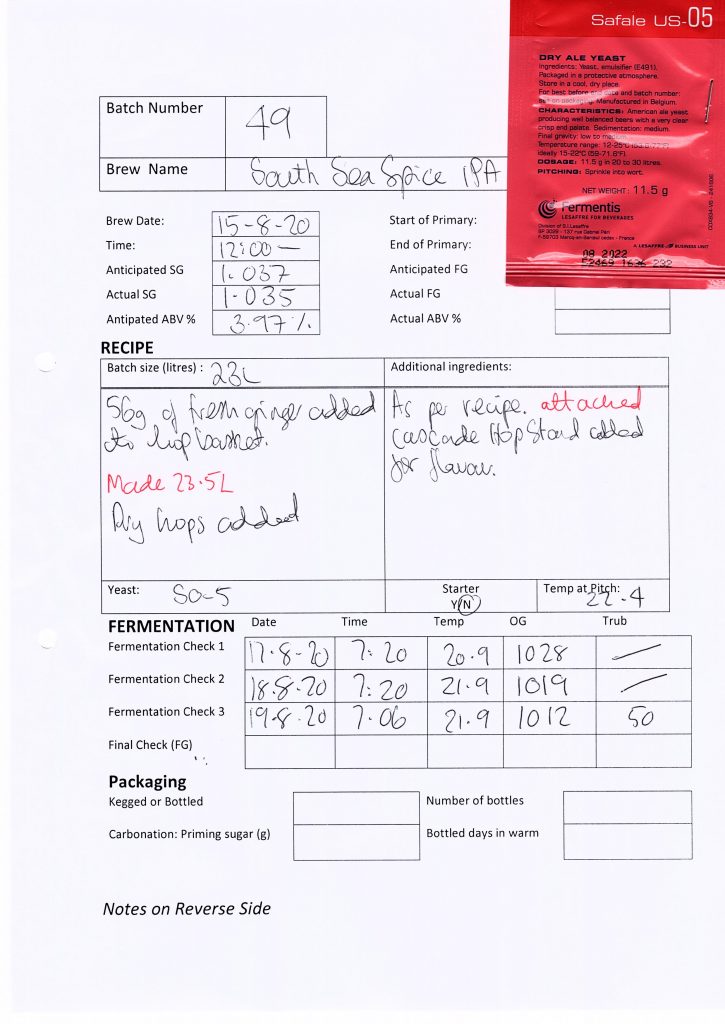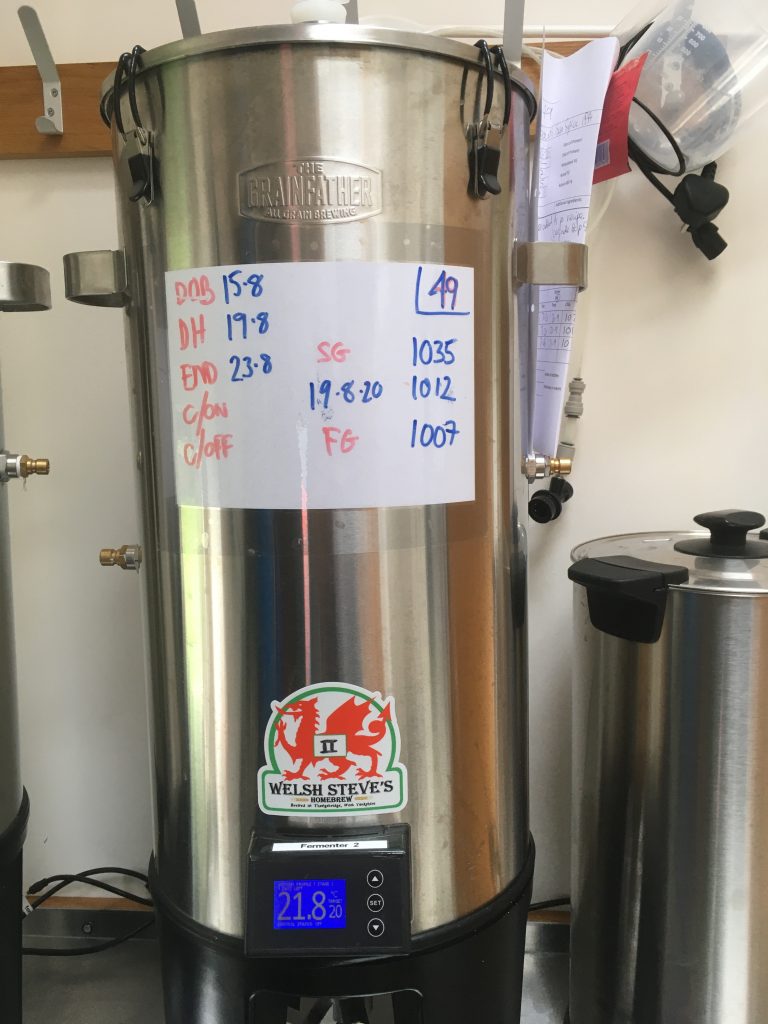If you want to improve your brewing, and you want to be able to brew consistently, you have to keep records. Boring, I know. But there is no additional cost involved and it is the only really way of working out what you are doing right or wrong.
My approach is simple, I record as much as I can. I start with a simple sheet (either in Word or Excel) and let it evolve over time. Often I want to record stuff and there is no space on the sheet, so it goes in the margin. Over time, I look at these little additions and incorporate into the sheet.
I have two sheets for each brew – the Grainfather recipe sheet (printed from the Grainfather website) and my own brew sheet. All of my bags of hops and malt are individual numbered. A keep a spreadsheet of what I have so I can tell just by looking at the spreadsheet if I have all the ingredients for a particular brew. I write this “asset number” against the relevant ingredient on the Grainfather recipe sheet. This way I know exactly which hops/malt went into each brew. Once a batch of hops/malt is used up, the label is stapled to the last brew.
My custom brew sheet is folded up and kept in the handle of the FV. Any used up packaging is stapled to the sheet. I use it to record (sort of) daily temperature and gravity readings. I have 1/2 sheet of A4 stuck to the side of the FV (under a sheet of transparent vinyl wrap). This has the summary data off the brew sheet together with any critical timings. I use a whiteboard marker to keep it up to date. Because I often have multiple brews going at the same time, this helps me keep an eye on things!
Once the brewing is done, both my custom brewsheet and the Grainfather recipe sheet are filed away.


